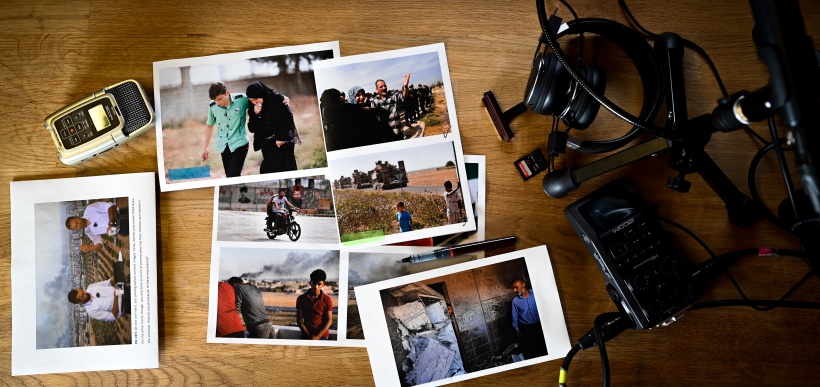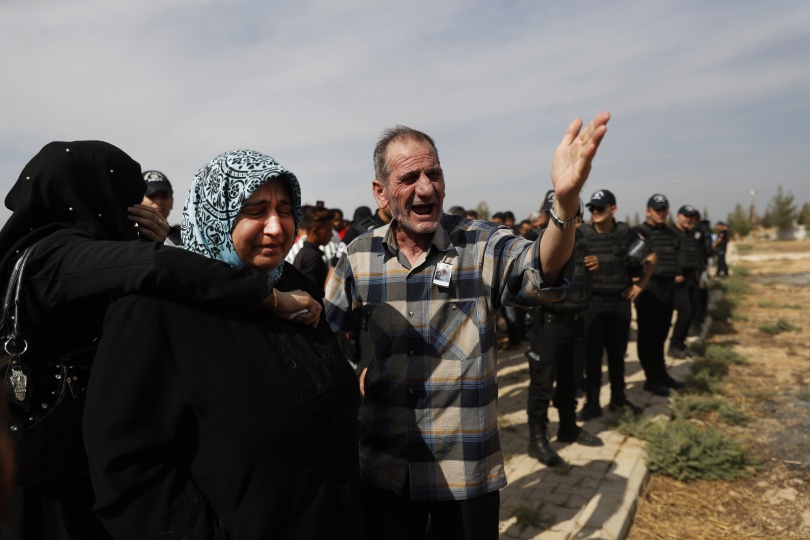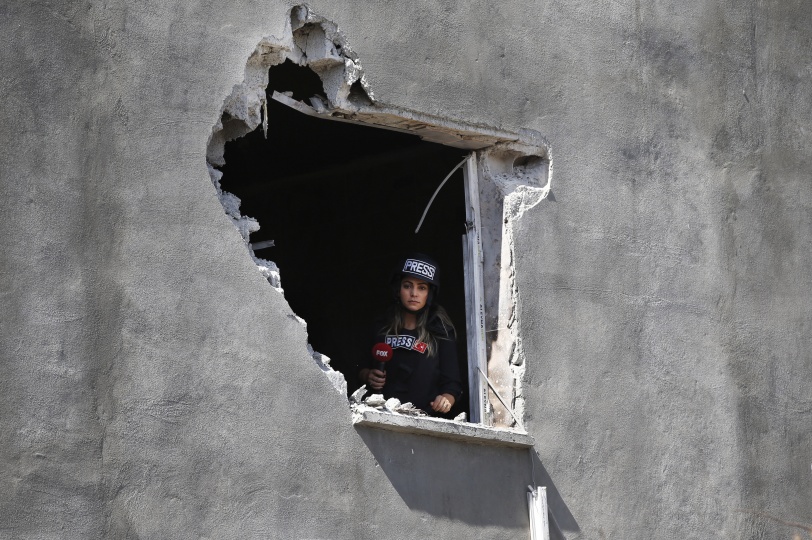On the Front Lines in Syria
A conversation between Michael Pfister and Lefteris Pitarakis.

AP photographer Lefteris Pitarakis has been working as a photojournalist in the Middle East for two decades. He spoke with ZEIT ONLINE Director of Photography Michael Pfister about the risks and emotional stress he faces in the field.
Pitarakis and Pfister met at a 2019 Dart Centre Europe retreat that focused on how journalists can support colleagues in distress.
A local resident uses his mobile to take photos of the damages on a house, caused by a mortar fired from inside Syria, on the Turkish town of Akcakale, southeastern Turkey, Saturday, Oct. 12, 2019.
Lefteris Pitarakis: The biggest challenge, as always, was access to the story itself. Army positions in Turkey were off limits, and we had to work long hours and drive huge distances to see convoys of tanks and other vehicles being transferred close to the border, as well as Turkey-supported Syrian fighters going in.
In many cities, we were blocked from areas adjacent to the border and we had to work from nearby hills, overlooking Syria. Many local residents were reluctant to talk to foreign media, and there was also occasional shelling in Turkey from inside Syria, so we had to be extremely careful.
Pfister: On one hand, you photographed combat images: tanks, bombs and smoke-filled skies. On the other hand, you took pictures of parents who lost their children and homes in the violence. How do you process all of these impressions?
Pitarakis: Let me first emphasize that my photos focused on the effects on people on the Turkish side only. I believe that the effects on people inside Syria were far greater, and I wish I had had the chance to work there as well.
To answer your question, I think my experience helps me deal with the extreme situations I cover. It's never easy, and you always have to be wary of the effects your coverage has on you. Nowadays, we are all aware of the effects of trauma and know that it is extremely important to make sure you and you colleagues get the help they might need during and after an assignment.
Members of the family of ten-month-old Mohammed Omar Saar, killed during incoming shelling from Syria, react following the baby's funeral in Akcakale, Sanliurfa province, southeastern Turkey, Friday, Oct. 11, 2019. 
Pitarakis: I've covered funerals of both civilians and soldiers, and there is always a difference. Civilians are completely innocent bystanders, whereas soldiers are combatants, making death a constant possible outcome. I believe the expression of mourning in the case of soldiers is more subtle, more controlled.
The saddest moment for me was definitely the funeral of Mohammed Omar Saar, a 10-month-old baby killed by shelling from Syria. His parents and the broader family – themselves refugees from Syria who had fled the war and found refuge in Turkey – were in complete shock. I could see the deep sorrow behind their blank faces as I was photographing them.
Pfister: How do you try to capture the situation faced by the war refugees – including families and children confronting uncertain futures – that you meet every day?
Pitarakis: I have covered refugees and displaced people across the Middle East throughout my career and I always approach refugees with sensitivity and the utmost respect. These people have lost nearly everything, and their futures are, as you say, totally uncertain, if not bleak. I try to depict their life and their plight in the most decent and respectful way possible. I try to spend as much time as I can with them, listening to their stories and giving them a chance to be heard.
Local residents look on as a convoy of Turkish forces' trucks transporting tanks is driven on a road towards the border with Syria in Sanliurfa province, Saturday, Oct. 12, 2019. 
Pitarakis: I work for the Associated Press, so I regularly worked with video journalists and/or text reporters, not to mention the great help of our media assistants that were driving for us.
At other times, I tried to team up with colleagues that I know and respect. In this kind of theater, you can’t be alone. You have to always calculate the possibility of something going wrong and you have to be able to trust the people you are with. On this assignment, the risks mostly had to do with incoming mortar and sniper fire. And the possibility of detention by the authorities if you went a little too far.
Pfister: How long did you plan to be on the front line?
Pitarakis: There was no concrete plan. It was totally uncertain from the beginning, so I was prepared to stay for several weeks. Upon implementation of the ceasefire, there wasn't much more to see from the Turkish side, so we pulled back. But we are on alert for possible redeployment at any time.
A journalist looks out of a hole on a house that was damaged by a mortar fired from inside Syria, on the Turkish town of Akcakale, southeaster, Turkey, Saturday, Oct. 12, 2019.


































































































